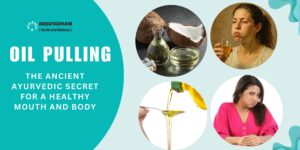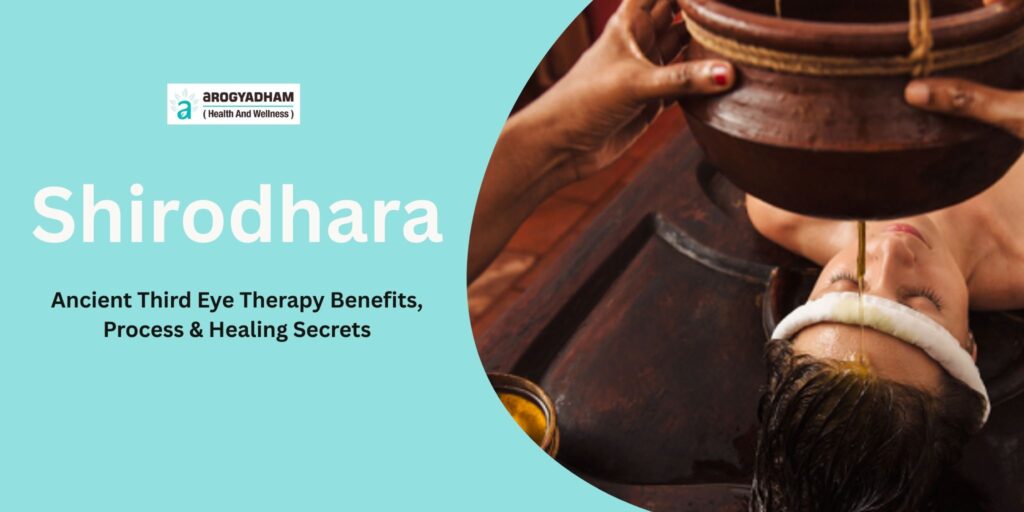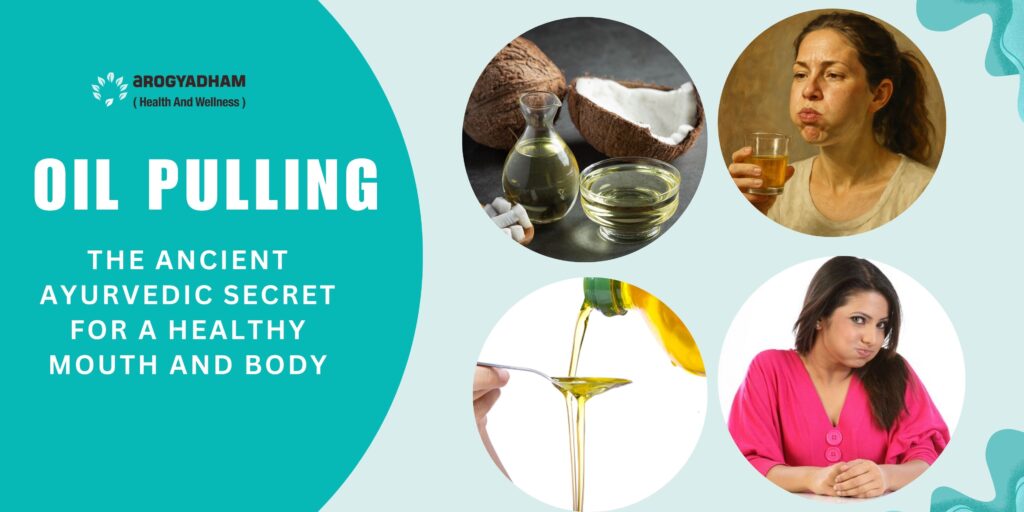Oil Pulling: The Ancient Ayurvedic Secret for a Healthy Mouth and Body
- Home
- /
- Ayurvedic Medicines
- /
- Oil Pulling: The Ancient...
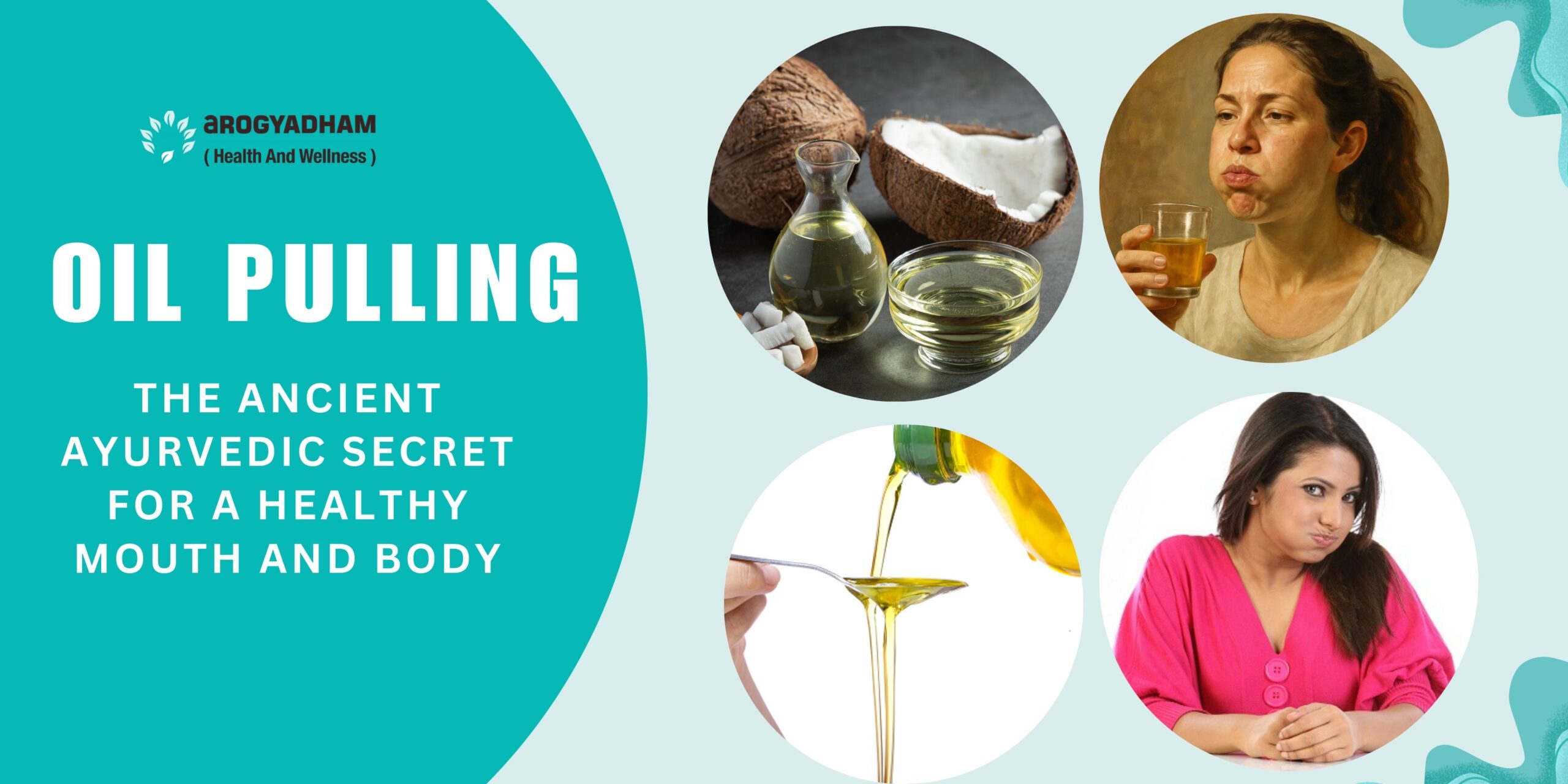
Most people think that brushing and flossing can guarantee the health of their teeth. But did you know that according to the World Health Organisation (WHO), nearly 3.5 billion people worldwide suffer from oral diseases, including tooth decay and gum problems? Poor oral health is also related to heart ailments, diabetes, and digestive problems.
This is where the ancient Ayurvedic practice of oil pulling comes in. Swishing oil in your mouth for about 15–20 minutes to “pull out” toxins and bacteria. Is that weird or what? But actually, it’s just simple, natural, and inexpensive. And while you may find it strange at first, Ayurveda and modern studies both believe that it can make a difference – a big difference – in how your teeth, gums, and general health fare.
The benefits of this practice may seem strange at first. But research of both Ayurveda and present science points to one answer: oil pulling really does improve dental care as well as your general health.

The Ancient Roots of Oil Pulling in Ayurveda
Oil pulling is not a new health trend; the practice originated over 3,000 years ago. In Ayurveda, it is referred to as Gandusha or Kavala and also described as part of the treatment regimen known as Dinacharya. In ancient theory, oral health is directly related to body health, and poisons in one’s mouth can affect the entire system.
Traditionally, sesame oil was used because of its warming qualities and rich nutrients. Nowadays, coconut oil is widely preferred on account of the fact that it tastes good and has antibacterial properties as well.
The Science Behind Oil Pulling
The theory behind oil pulling is relatively easy to understand: as you swish oil about in your mouth, it mixes with saliva and sticks to harmful bacteria or toxins. This bacteria is then stuck in the oil, which can be spat out, reducing the total bacterial load in your mouth.
One of the main culprits in cavities is Streptococcus mutans, a bacterium that oil pulling has been shown to reduce. A study published in the Journal of Oral Health and Dental Management even found that oil pulling can be as effective as mouthwash in reducing bacteria, without the side effects of alcohol-based rinses.
The Best Oils for Oil Pulling
Not every oil works the same way. Here are the most common choices:
- Coconut oil – Contains lauric acid that offers potent antibacterial and anti-inflammatory properties. It’s also the best-tasting, which is why it’s the most popular.
- Sesame oil – The traditional Ayurvedic oil. It is loaded with antioxidants and has been used for centuries for oral health.
- Sunflower oil – Less traditional and less widely available, with moderate antibacterial properties, it also has a less heavy flavour.
Coconut oil is generally recommended for beginners because it’s easier to swish and more enjoyable in flavour.
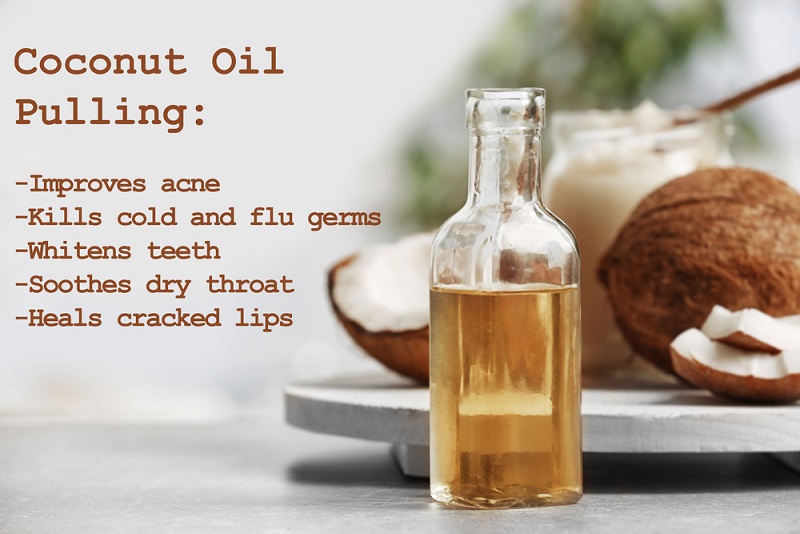
How to Do Oil Pulling Step by Step
Oil pulling is simple, but doing it the right way matters:
- Do it first thing in the morning, before eating or brushing.
- Take about one tablespoon of oil (coconut or sesame is best).
- Swish the oil gently around your mouth for 15–20 minutes. Don’t gargle or swallow.
- Spit the oil (not in the sink, as it can clog pipes).
- Rinse your mouth with warm water.
- Brush your teeth as usual.
If you have started this practice recently, then 5 minutes is good to start; you can increase the time over time.
Health Benefits of Oil Pulling
1. Oral Health Benefits
- Reduces plaque and cavities: Oil pulling kills a lot of bacteria, and that is the reason why teeth never get as stained anymore.
- Strengthens gums and teeth: Ayurveda says it nourishes the tissues of the mouth, making the gums firmer.
- Freshens breath naturally: A study shows that it may be as effective as mouthwash in decreasing halitosis (bad breath).
- Whitens teeth: A common reaction of people doing this regularly is that their toothache disappears, and they look cleaner than in years.

2. Detox and Whole-Body Benefits
- Removes toxins: Helps remove ama from the mouth, preventing it from entering the body.
- Improves digestion: A healthy mouth means better gut health.
- Clears sinuses: Regular practice may help alleviate sinus congestion and headaches.
- Boosts skin glow: By reducing internal toxins, oil pulling supports clearer, brighter skin.
- Supports immunity: Since oral health is linked to immunity, this practice helps strengthen resistance to disease.
Fact check: A 2017 study in the Nigerian Medical Journal found that oil pulling significantly reduced oral bacteria and improved overall oral hygiene when practised for just 2 weeks.
Oil Pulling vs. Modern Mouthwash
- Natural vs. Chemical: Oils are natural, whereas most mouthwashes are made up of alcohol and synthetic chemicals.
- Holistic Benefits: Oil pulling benefits the whole body, not just your mouth.
- Safety: There are no side effects such as burning or a dry feeling.
- Cost-effective: A bottle of oil will last longer than a multitude of bottles of mouthwash.
Who Should Practise Oil Pulling?
This practice is safe and beneficial for:
- Adults and teenagers.
- People with gum problems, cavities, or bad breath.
- Those with weak immunity or frequent colds.
- Anyone who wants a natural way to improve oral health.
Children under 5 (risk of swallowing oil) and people with jaw pain who can’t swish for long should avoid.
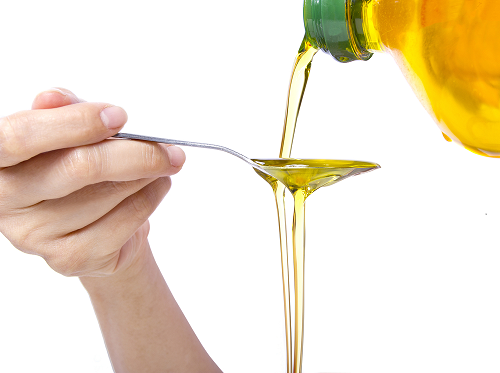
Myths and Misconceptions
- It replaces brushing and flossing – False. Oil pulling is a supplement, not a replacement.
- Only coconut oil works – Not true. Sesame and sunflower oils are also effective.
- Results are instant – Benefits take weeks of consistent practice to show.
Precautions and Who Should Avoid It
- Children below 5 years old should not do oil pulling due to the risk of swallowing.
- People with swallowing difficulties should avoid it.
- Pregnant and breastfeeding women should get an opinion from a doctor before starting.
- Always spit oil into the trash
Frequently Asked Questions
Q. How often should I do oil pulling?
Ans: Daily is best, but even 3–4 times per week shows results.
Q. Can children practise oil pulling?
Ans: Yes, but only above the age of 8+, as they can swish without swallowing.
Q. Does oil pulling replace brushing?
Ans: No. It should be combined with brushing and flossing.
Q. How long should I swish the oil?
Ans: 15–20 minutes is ideal. Beginners can start with 5–10 minutes.
Q. Can I do oil pulling at night?
Ans: Yes, but mornings are most effective according to Ayurveda.
Q. When is the best time to do oil pulling?
Ans: Morning, before eating or brushing, works best.
Q. Are there any side effects?
Ans: None serious, but swallowing the oil can cause stomach upset.
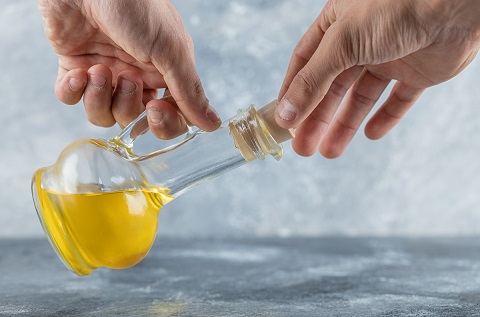
Oil Pulling in Modern Lifestyle
Oil pulling is not just for Ayurveda followers—it’s now part of global wellness trends. Celebrities, nutritionists, and dentists recommend it for natural oral care. In fact, Google searches for “oil pulling benefits” have grown steadily in the last five years.
For busy people, it’s simple—swish oil in your mouth while showering, making tea, or checking emails. It requires no extra time yet gives powerful results.
Also Read – Apple Cider Vinegar Benefits, Uses, Side Effects And Everything
Conclusion
Oil pulling is a simple, natural, and affordable way to improve oral hygiene and entire-body well-being. Working on such systems in absolute health from the bottom up will eventually achieve results. In addition to fresher breath and stronger gums, you are also likely to find clearer skin and improved immunity. After one month of morning oil pulling, your teeth will be whiter and look better. Oil pulling is much more than a rearrangement of dental hygiene. It is an Ayurvedic body detoxification and rejuvenation therapy, supported by both ancient wisdom and modern science, as any Tibetan doctor will be happy to tell you.
It’s not a substitute for cleaning your teeth but rather another step in routine oral and systemic wellness.
Regardless of whether you select sesame, coconut, or sunflower oil to swish around (10 minutes a day will do), you’ll still achieve healthier gums, fresher breath, improved digestion, and radiant skin.
Ayurveda teaches us that well-being can be simple. While these are some very basic rituals of being well, suddenly everything becomes easier, and everyone rejoices for the moment.
Ready to Heal Naturally?

Share With
Friends

Dr. Rakesh Agarwal, a third-generation Ayurveda expert and research scholar, treats chronic ailments through Ayurveda and Panchakarma. He is also the founder-editor of Arogyadham Magazine, promoting Ayurveda and wellness to over a million readers since 1992.

Dr. Arjun Raj, an Ayurvedic physician and wellness expert, is the Director of Arogyadham Health Care and serves on the executive board of Arogyadham Health and Wellness. He blends traditional Ayurveda with modern wellness to promote balanced, healthy living.

Dr. Amrit Raj, an Ayurvedic doctor and certified yoga teacher, is the Director of Arogyadham Health and Wellness. He specializes in chronic conditions and actively promotes Ayurveda and yoga worldwide for healthier living.



